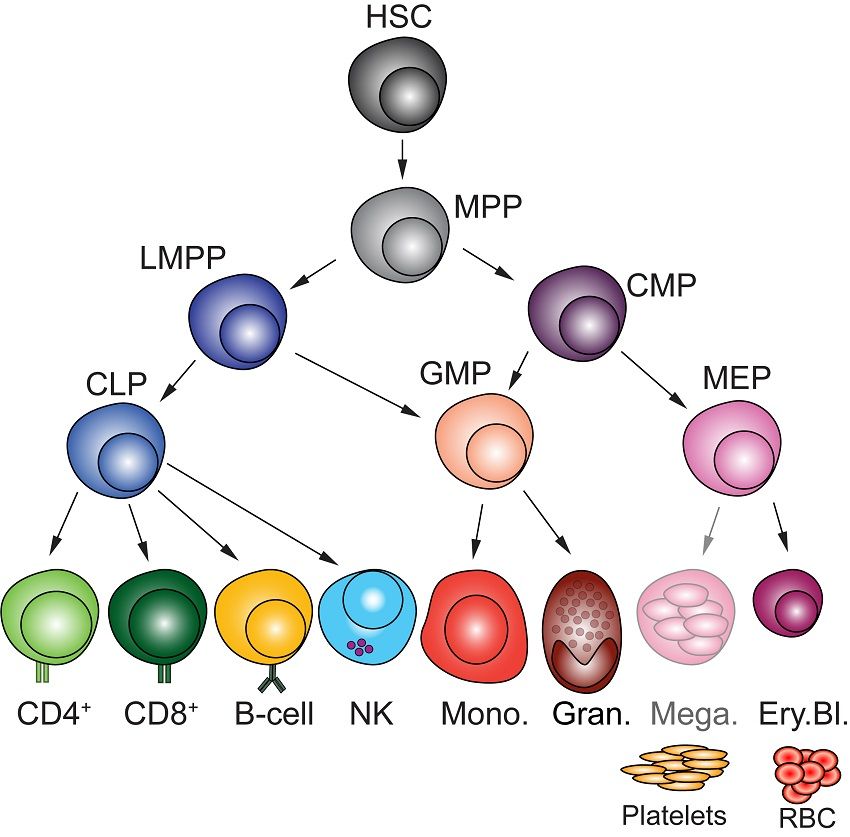Circular RNAs are abundantly expressed in hematopoietic cells
NewsBenoit Nicolet, from the Wolkers lab, deciphered the expression of so-called circular RNAs in hematopoietic cells. This will help to find out whether and how these circRNAs regulate the differentiation of stem cells into different blood cell types. The work is published in Nucleic Acid Research.
Our blood encompasses many different blood cell types that fulfill a plethora of functions. Oxygen and nutrients are transported, and a rapid wound healing and defense mechanisms for pathogens are at hand at all times. To guarantee a life-long effective execution of these functions, new blood cells are continuously generated from hematopoietic stem cells.
Regulation of differentiation
The differentiation into specific blood cell subsets is a highly orchestrated process. Transcription factors and non-coding RNAs, such as micro-RNAs and long non-coding RNAs are known regulators of this process. Recently, another class of RNAs has been identified that circularizes and that is highly stable in cells. Whether and how these so-called circular RNAs (circRNAs) are expressed in human hematopoietic cells was to date not known.
 Illustration: differentiation of hemopoietic stem cell into various blood cell types.
Illustration: differentiation of hemopoietic stem cell into various blood cell types.
Benoit Nicolet from the Wolkers lab studied the expression of circRNAs in many different blood cell types, from stem cells to fully differentiated blood cells. By re-analysing published data sets with newly available detection tools, he uncovered that circRNAs are highly abundant in hematopoietic cells. He also showed that the expression pattern of circRNAs is cell-type specific. In collaboration with the hematopoiesis experts Marieke von Lindern and Emile van den Akker from Sanquin, the Wolkers lab also validated several of the newly identified circRNAs in primary blood cell subsets. These novel findings will help decipher whether and how circRNAs drive the differentiation of hematopoietic stem cells into different blood cell types.
This work is financed by the Landsteiner Foundation of Blood Transfusion Research (LSBR), and the Netherlands Organisation for Scientific Research (NWO).

